Northern Arizona Forest Fund
Looking ahead to 2023
From restoring crucial wildlife habitats to improving the quality and sustainability of our water supply, Arizona’s National Forest Foundation team and our many partners continue to reach new watershed investment goals bringing health and economic resilience to families, communities, and businesses across Arizona.
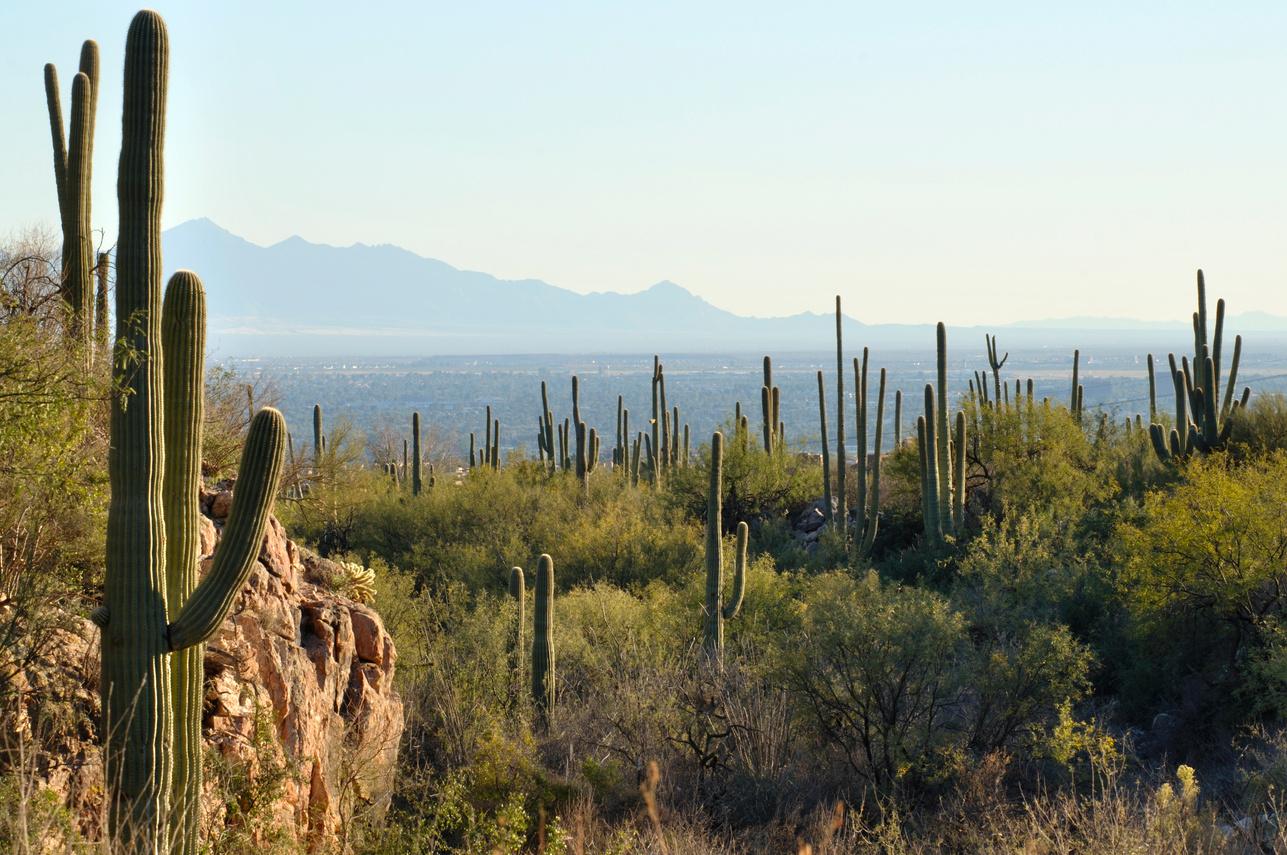
The Northern Arizona Forest Fund helps maintain clean air and sustainable water supplies, healthy forests to explore, running streams to picnic along, and safe, sustainable trails that provide amazing experiences.
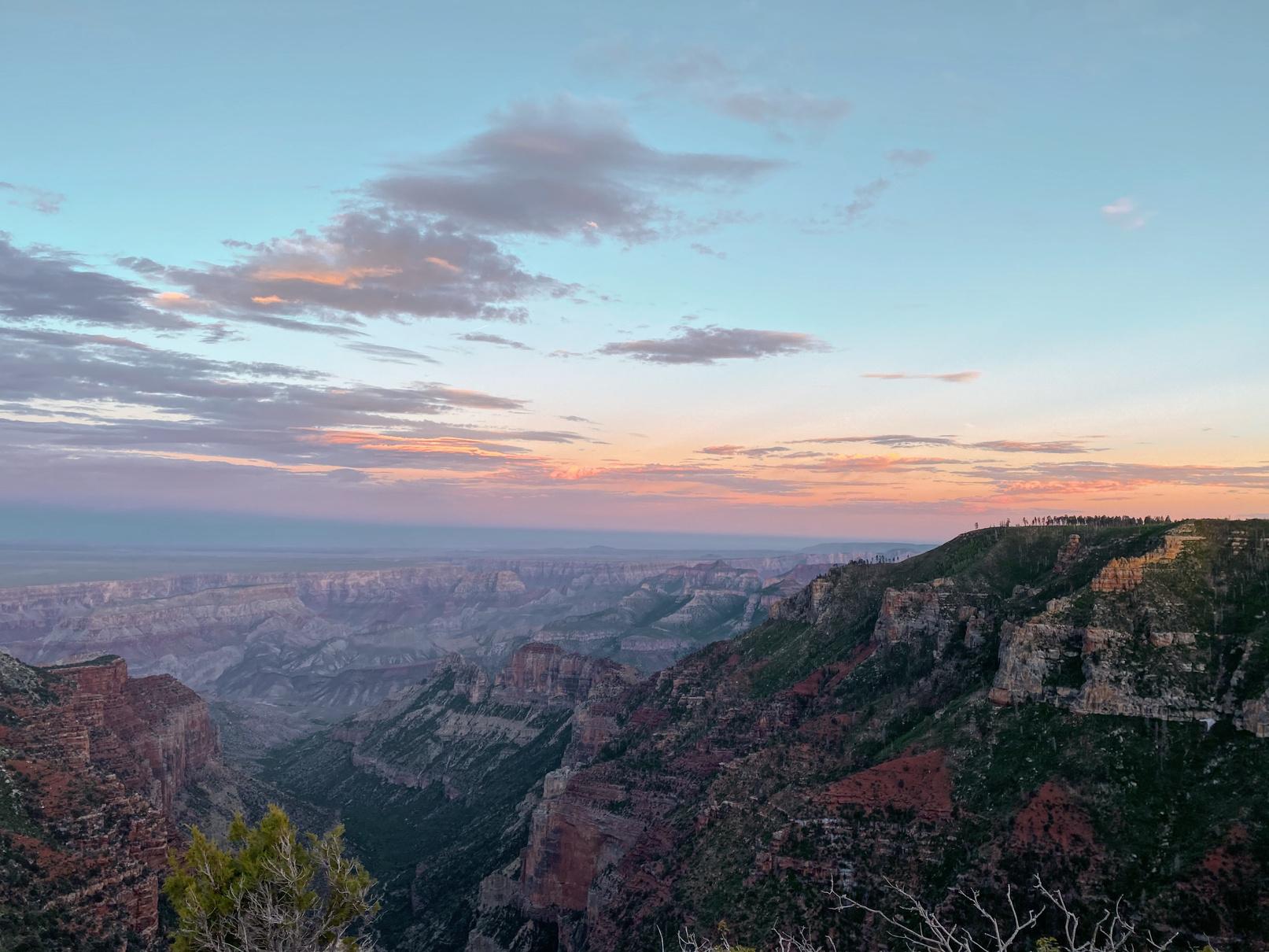
National Forest Foundation Southwest Program Sr. Manager sstortz@nationalforests.org
Southwest NFF: @southwestforests nff
National Forest Foundation: @nationalforests
 Sasha Stortz
Sasha Stortz
CONTACT
928.961.0318
FOLLOW ON INSTAGRAM
Tonto National Forest
BUSH FIRE REPLANTING
The Bush Fire started on June 13th, 2020 and became the 5th largest wildfire in Arizona history. The fire burned large areas of Sonoran Desert, an ecosystem that is not adapted to wildfire. With an estimated 80,000 iconic saguaro cactus killed and an upwelling of desire to assist from the local community, an initiative was born: restoring and revegetating portions of the Bush Fire burn scar over the next 5-10 years. The National Forest Foundation, Four Peaks Brewing Company, Natural Restorations, and the U.S. Forest Service are partnering in this restoration work. The Four Peaks Cleanup & Save Our Saguaros Replanting Event happens annually, and numerous volunteers help clean up and replant cactus and other native plants to help with erosion and restore the burned area.
DEADMAN MESA
The Deadman Mesa Mastication Restoration Project is a multi-year collaborative effort across a total of 3,178-acre landscape located on the Tonto National Forest, Payson Ranger District. The project area lies roughly five miles west of Strawberry, AZ, on FS land bordering Mazatzal & Fossil Creek Wildernesses. The project goal, including mastication and hand thinning treatments, will result in improved habitat conditions that mimic the historic open juniper woodland/grassland structure that once existed with large junipers, decreased shrub cover and abundant native grass.
Additional benefits include:
Reduce likely major fire movement and spotting > 1 mile
Reduce the risk of catastrophic, stand-replacing wildfire through resulting decreased tree densities, ladder fuels and crown continuity.
Restore project area to historic open juniper woodland/grassland structure that once existed with large junipers, decreased shrub cover, and abundant native grass.

Protect adjacent communities of Pine and Strawberry, and watersheds

HIGHLINE TRAIL IMPROVEMENTS
The Highline Trail is an historic route that was cut in the late 1800s and believed to be used as a travel corridor to connect homesteads and communities around the towns of Payson and Pine. The trail was designated as the Highline National Recreation Trail in 1978, sharing 17 miles with the Arizona National Scenic Trail.
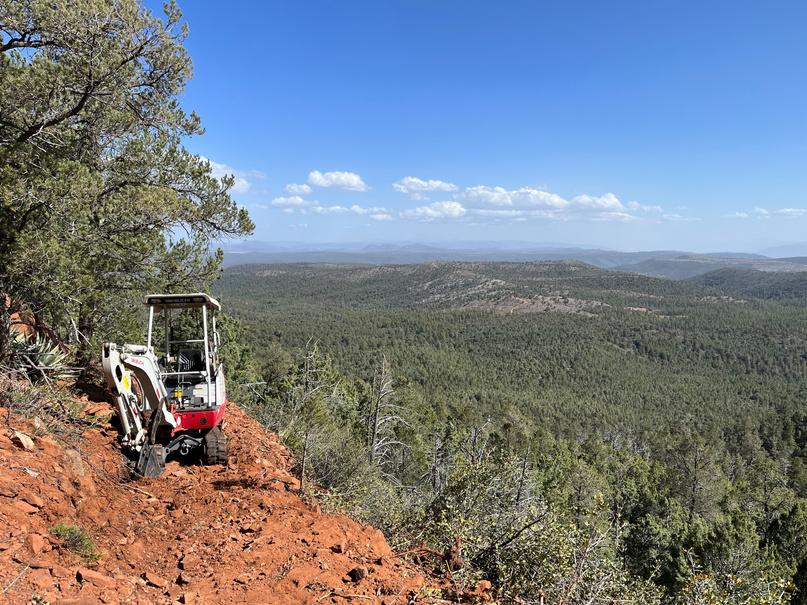
Many sections of the 50-mile trail are losing tread and significantly eroded, causing significant sediment deposition downstream into the East Verde River system. Conditions have been further exacerbated by several fires in recent years, resulting in many sections of trail requiring heavy maintenance or even reroutes. The Highline Trail is one of the ‘essential actions’ listed in the East Verde Watershed Restoration action plan that will mitigate those impacts.
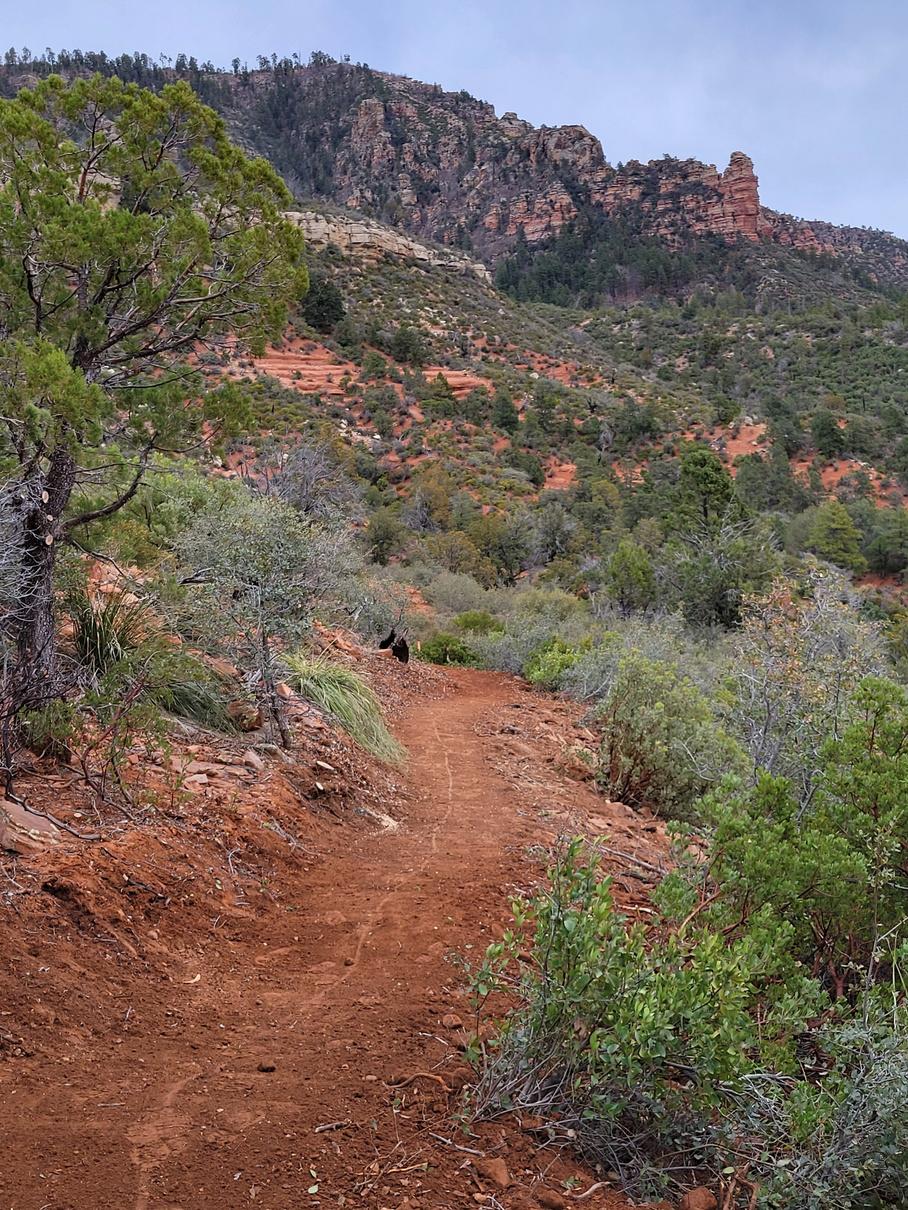
This project targets erosion, improving recreation experience and reducing sedimentation into important waterways. With your support, we will be able to address a 50 mile stretch of trail in need of re-routes, bridges, and other improvements. Phase II and III will be initiated in 2023 to begin work extending from Washington Park to 260 trailhead – an additional 34 miles of trail improvements!


LITTLE GREEN VALLEY FEN
Following the successful installation of an ungulate enclosure in 2022, we are working to design additional phases of work on the Little Green Valley Fen. The fen, one of only two known peat wetlands found in Arizona, is a unique, groundwater fed system. A headcut migrated upstream for decades, dewatering the fen. The goal of the project is to restore hydrologic function to the fen. The study results are anticipated in mid-2023 with restoration activities following shortly after.
The Lower Salt River Restoration Project (LSRRP) is an excellent example of landscape-scale collaborative stewardship in action. The Salt River is a major artery for city water supplies, and the Lower Salt River Recreation Area is a well-loved destination spot for boaters, hikers, bird watchers, anglers, and many others. Unfortunately, the function and health of the Lower Salt River has degraded over the last several decades. This multi-year project aims to restore one of the few remaining low-elevation desert riparian vegetation communities in the state, with a focus on water sustainability, watershed connection, and enhanced public awareness.
The goal of the LSRRP is to reduce the presence of invasive plant species, increase the abundance and diversity of native plant species, improve riparian habitat for birds and other wildlife species, and reduce the risk of catastrophic wildfires and post-fire flooding – all along the 14-mile stretch of river from Stewart Mountain Dam downstream to Granite Reef Dam. Additionally, this project presents an excellent opportunity to engage the local community through partnership and volunteer opportunities, technologybased education programming for local middle and high schools, and ASU students, and sustained community involvement in monitoring and maintaining restoration activities.
Since 2018, the LSRRP has treated roughly 300 acres of riparian habitat for the removal of salt cedar and giant reed. Part of this long-term management of vegetation on the Salt River requires mitigation of slash material and debris resulting from treatment. There is a pressing need, due largely to the high number of visitors in this area, to mitigate the threat of unintentional fire, by eliminating existing piles of slash created by initial salt cedar treatment from in fall/winter of 2022/2023.
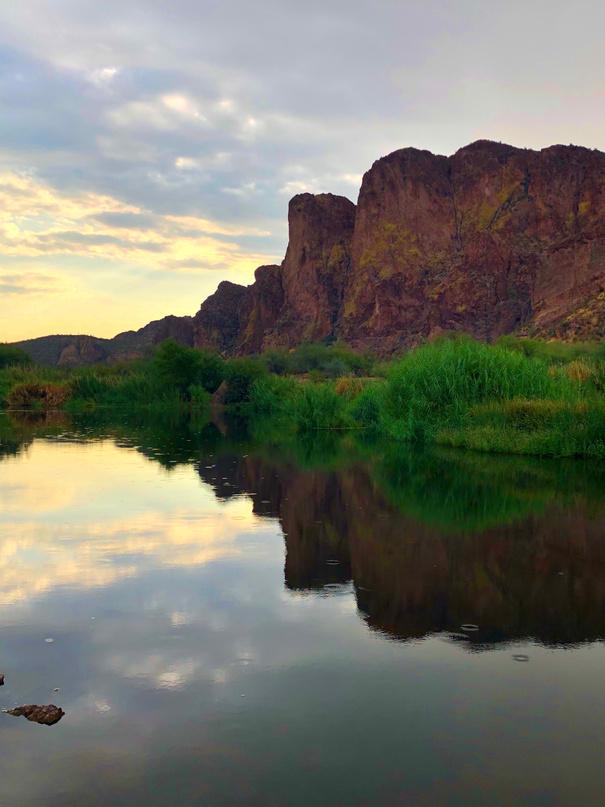
In tandem with the LSRRP, NFF supports Green Drone AZ, where students from diverse Phoenix area middle and high school students engage in STEM focused activities on the LSR. The goal of Green Drone AZ is to strengthen and catalyze development of a broader “pipeline” of students interested in STEM by using cutting edge technology to address real-world environmental challenges within their communities. We hope to encourage persistence in staying on the STEM-focused pathway by exposing students to technologically advanced systems such as drones and GIS. Management of our public lands and natural resources will soon fall into the hands of today’s youth. This program aims to arm these future leaders with the tools and resources needed to successfully protect and conserve our natural ecosystems.

LOWER SALT RIVER & GREEN DRONE
PINE CANYON
On the Payson District of the Tonto NF, the Pine Canyon Restoration Project will contribute to restoration of fire-adapted systems by reducing intensities of wildfires. This is especially important as the project is adjacent to, and upstream of the forested town of Pine, AZ in Gila County.

The project is ~450 acres in total, and will include ~165 acres of merchantable timber, precommercial thinning, and will be treated with full removal of all associated slash from the merchantable operations. An additional 160 acres of only pre-commercial non-merchantable material will also be fully removed, and an additional estimated 125 acres of helicopter logging of merchantable timber, pre-commercial thinning, and full removal of all associated slash from the hand felling and helicopter operations will occur in areas too steep for traditional mechanical operations.
SONORAN INSIDERS

Sonoran Insiders is a collaborative program to reach wider audiences with local social media influencers for the care and responsible use of natural spaces and National Forests in Central Arizona. Ambassadors with the program get unique experiences, tours and events with land managers, local organizations and scientists to learn about the inner workings of outdoor spaces and their management, and then share what they’ve learned on social media. In 2022, the program made 15K impressions on Instagram.
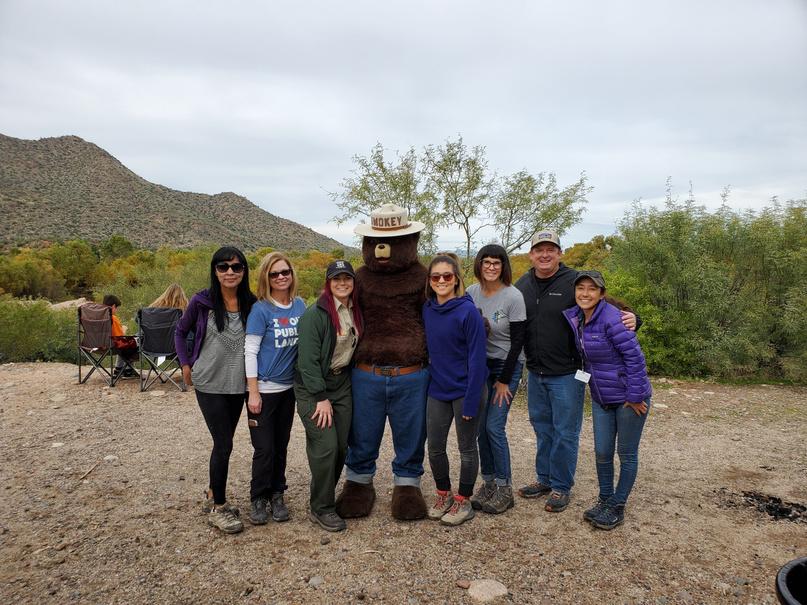
Coconino National Forest
OAK CREEK TRAIL REHAB & WATERSHED RESTORATION PHASE II
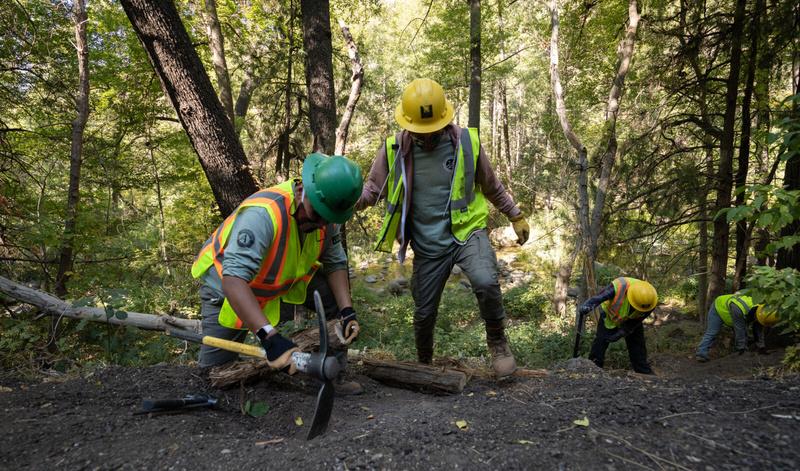
The Oak Creek Watershed Restoration Action Plan lines out activities to improve the water quality of Oak Creek near Sedona. We are working on Phase II of trail rehabilitation efforts in order to reduce erosion into the creek as well as improve visitor safety in the area. So far approximately 200 unauthorized social trails have been rehabilitated and another 40 improved. Additional activities under the WRAP including decommissioning of unauthorized roads also causing significant erosion into the creek are set to begin in 2023.
FLAGSTAFF WATERSHED PROTECTION: JOHNNEYS, MARSHALL, & WEIMER SPRING
Located around the Flagstaff area and feeding into the Little Colorado River watershed, this project is a partnership between NFF, the Coconino National Forest, Coconino County, the City of Flagstaff, and the Dept. Of Defense. Hand and mechanical thinning treatments will be conducted over 3-5 years to reduce risk to Flagstaff’s Lake Mary water source, protect the community, and protect key military infrastructure in the Flagstaff area include the Naval Observatory and Camp Navajo.
WEST SEDONA DISPERSED CAMPING & RECREATION MANAGEMENT PHASE II
Areas west of the city of Sedona in the Oak Creek watershed area heavily impacted by intense levels of camping and off-road vehicle use, causing erosion. In order to reduce erosion, protect resources, and improve visitor experience, we have partnered with the Coconino National Forest to implement a designated dispersed camping plan for the area, including delineating authorized camping areas and closing access to unauthorized areas. In a second phase beginning this year, we will implement additional work to reduce erosion, manage waste, and revegetate impacted areas.

WOOD FOR LIFE


Through Wood for Life tribal fuelwood initiative, small diameter low value wood from restoration projects is provided to Navajo and Hopi communities in need of firewood for home heating and other cultural uses. In 2023, we will begin a new phase of work with support through the Bipartisan Infrastructure Bill which will scale up this program significantly. Through this initiative, we will partner with youth crews, including Navajo and Hopi youth, will perform hand thinning work across the Coconino National Forest and coordinate distribution of the wood through Indigenous wood banks. These thinning projects will improve watershed and forest health, reduce fire and post-fire flood risks to communities, and improve wildlife habitat.


Kaibab National Forest
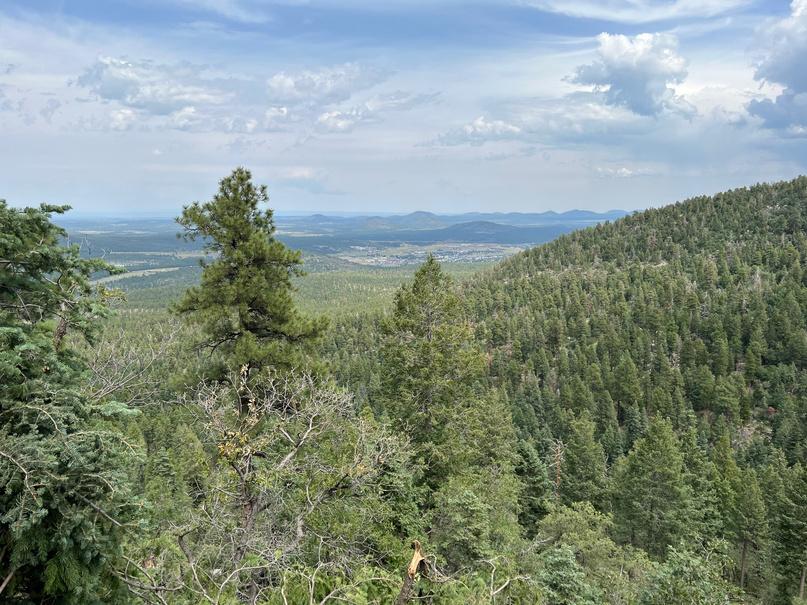
BILL WILLIAMS STEEP SLOPE 3
The Bill Williams Mountain Steep Slope Forest Restoration Project is the most complex restoration project ever conducted by the Southwest Region of the National Forest Foundation (NFF) since establishing the Northern Arizona Forest Fund (NAFF) in 2015. Together with our partners, we are removing 100 years of overgrowth on some of the steepest terrain to protect both the landscape and the nearby city of Williams, AZ, from high-intensity fire and flooding.

Steep slope forest restoration is incredibly costly and complex but needed. Rocky, inaccessible parts of the mountain make a normal ground-based thinning operation impossible. Fuel reduction on steep slopes, like the ones found on Bill Williams Mountain, requires technical operations with specialized methods, including hand thinning and helicopters to remove fuels from the mountain.
From 2019 – 2021, crews and helicopters thinned and removed excess wood on roughly 475 steep-slope acres. This year our efforts continue, and we are working on treating another 280 acres.
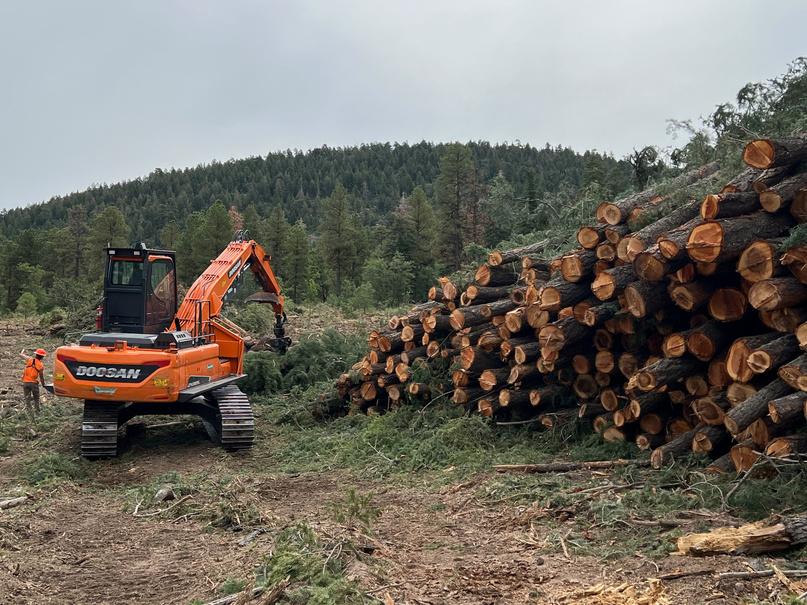



 Sasha Stortz
Sasha Stortz



















